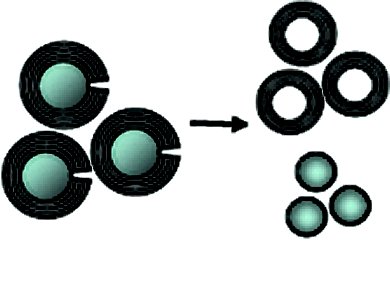Graphitic carbon nanocapsules (GCNs) have potential applications, for example, in lithium-ion batteries, supercapacitors, hydrogen storage, and drug delivery. GCNs have attracted growing research interest for their use as catalyst supports of direct methanol fuel cells (DMFCs) due to their outstanding properties, such as low density, high specific surface area, superb corrosion resistance, excellent electronic transport properties as well as high thermal resistance, high chemical stability, and high rigidity.
Honggang Fu, Jilin University, Changchun, China, and colleagues prepared GCNs with high crystallinity and a large specific surface area (SSA) in high yield by a solid-state pyrolysis route using a polyacrylic weak-base anion-exchange resin (PAWBA) as the carbon source. The catalytic iron particles are surrounded by the active carbon atoms derived from PAWBA during the pyrolytic process. As the pyrolytic temperature is further increased they escape from the carbon nanocapsules.
The synthesized GCNs were used as an excellent support of platinumnanoparticles (3–5 nm) for methanol electro-oxidation. The Pt/GCN electrocatalyst exhibited a higher catalytic activity and better durability towards methanol electro-oxidation than Pt/C (Vulcan XC-72R support) and commercial Pt/C(JM) catalysts.
- Graphitic Carbon Nanocapsules: Scaled Preparation, Formation Mechanism, and Use as an Excellent Support for Methanol Electro-oxidation,
Lei Wang, Chungui Tian, Hongxing Zhang, Honggang Fu,
Eur. J. Inorg. Chem. 2012.
DOI: 10.1002/ejic.201100988



